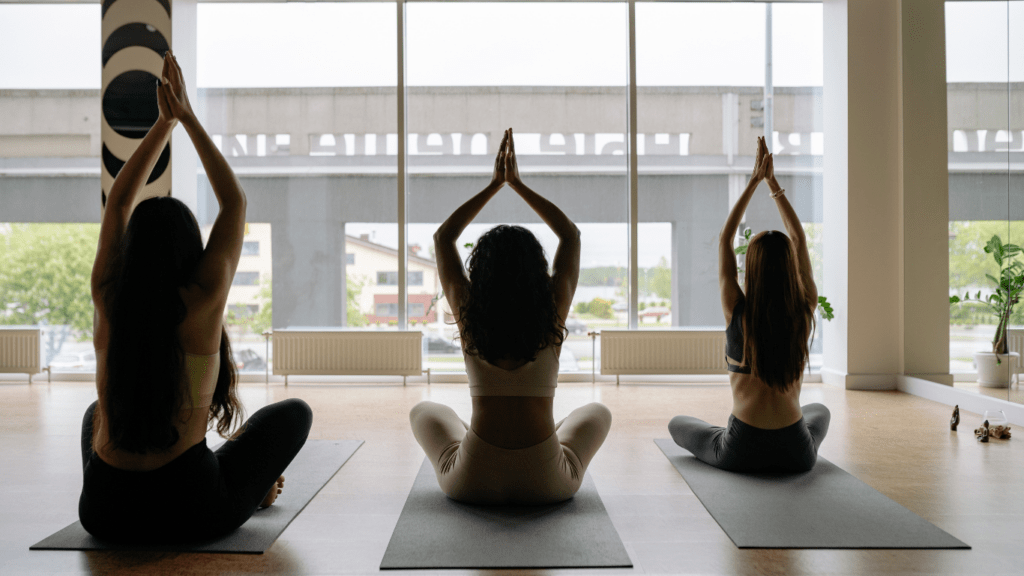The Impact of Yoga on Overall Skin Health
Yoga enhances skin health by promoting internal and external benefits, creating a natural glow and improving complexion.
How Yoga Improves Skin Clarity
Yoga reduces skin issues like acne and blemishes. It boosts blood circulation, bringing more oxygen and nutrients. Poses like the downward-facing dog and child’s pose increase blood flow to the face. Yoga also helps regulate hormones, and hormonal balance reduces acne.
The Role of Yoga in Anti-Aging
Yoga maintains skin’s youthful appearance. The practice reduces stress, lowering cortisol levels linked to aging. Relaxing poses like savasana and breathing exercises like pranayama decrease stress. Yoga improves collagen production, increasing skin elasticity and reducing wrinkles.
Yoga Techniques for Enhanced Skin Care
Implementing specific yoga techniques can significantly benefit skin health. By incorporating particular poses and breathing exercises, I can enhance circulation and detoxify the body, which ultimately reflects on my skin.
Yoga Poses That Boost Circulation
Certain yoga poses improve blood flow, enhancing my skin’s radiance. Here are some effective poses:
- Sarvangasana (Shoulder Stand): This pose promotes circulation to my face, aiding in cell regeneration and a glowing complexion.
- Adho Mukha Svanasana (Downward-Facing Dog): By inverting my body, this pose increases blood flood to my face, helping to clear acne and other impurities.
- Trikonasana (Triangle Pose): This pose increases my oxygen supply, which helps nourish skin cells.
- Kapalabhati (Skull-Shining Breath): This rapid breathing technique purifies my blood by expelling toxins, resulting in clearer skin.
- Anulom Vilom (Alternate Nostril Breathing): This exercise balances my body’s energy, reducing stress and promoting skin clarity.
- Bhastrika (Bellows Breath): Intense inhalation and exhalation increase oxygen levels, rejuvenating my skin cells.
The Physical Benefits of Yoga for the Body

Practicing yoga offers extensive physical benefits, significantly enhancing the body’s overall health and performance. From flexibility to body composition, yoga positively impacts multiple aspects of physical wellness.
Enhancing Flexibility and Strength Through Yoga
Yoga improves flexibility and strength by engaging various muscle groups. Poses like:
- Downward Dog
- Warrior I stretch and lengthen muscles
reducing stiffness and increasing range of motion.
Consistent practice leads to greater muscle strength without bulking, as seen in bodybuilders. For instance, poses like Plank and Chair Pose build core strength, aiding in better posture and balance.
According to the American Osteopathic Association, yoga also enhances joint health, making daily activities easier and reducing injury risks.
Yoga’s Effect on Body Composition
Yoga impacts body composition by aiding in weight management and muscle tone. Vigorous forms like:
- Vinyasa
- Ashtanga
burn calories effectively, contributing to fat loss.
Postures like Boat Pose and Bridge Pose engage the abdominal muscles, promoting a toned, lean physique.
Studies in the Journal of Alternative and Complementary Medicine show that regular yoga practice can lower body mass index (BMI) and improve muscle-to-fat ratios.
Additionally, yoga reduces cortisol levels, indirectly assisting in weight management by curbing stress-induced overeating.
Integrative Approaches to Yoga
Combining yoga with other wellness practices amplifies its benefits, creating a holistic approach to health.
Combining Yoga with Other Wellness Practices
Integrating yoga with mindfulness meditation enhances mental clarity by promoting present-moment awareness and reducing stress. Studies show that meditation boosts gray matter density in regions linked to learning and memory (source: Harvard Gazette).
Pairing yoga with proper nutrition optimizes physical performance. Consuming a balanced diet rich in fruits, vegetables, and lean proteins supports muscle recovery and energy levels (source: Mayo Clinic). For example, consuming antioxidants from berries can reduce exercise-induced oxidative stress.
Hydrotherapy complements yoga by relieving muscle tension. Soaking in warm water post-yoga helps improve circulation and relaxes tight muscles (source: Cleveland Clinic). This practice is particularly useful after intense yoga sessions like Vinyasa or Ashtanga.
Combining aromatherapy with yoga can elevate the experience. Essential oils like lavender reduce anxiety, while eucalyptus can enhance respiratory function during pranayama (source: National Institutes of Health).
Cross-training with activities like Pilates or Tai Chi diversifies fitness routines. These practices strengthen the core and enhance flexibility, contributing to better yoga performance.
Finally, mindful breathing exercises, such as those practiced in pranayama, pair well with cardiovascular activities like running. This combination improves lung capacity and stamina.
Using a holistic approach by combining yoga with these wellness practices maximizes physical, mental, and emotional benefits.


 Nicoleeny Castrolos, the founder of Body Care And Matter, is a passionate advocate for health and wellness. With a deep commitment to improving the lives of individuals, Nicoleeny has built a platform dedicated to delivering the latest insights on men’s and women’s health, nutrition, and mental wellness.
Nicoleeny Castrolos, the founder of Body Care And Matter, is a passionate advocate for health and wellness. With a deep commitment to improving the lives of individuals, Nicoleeny has built a platform dedicated to delivering the latest insights on men’s and women’s health, nutrition, and mental wellness.

